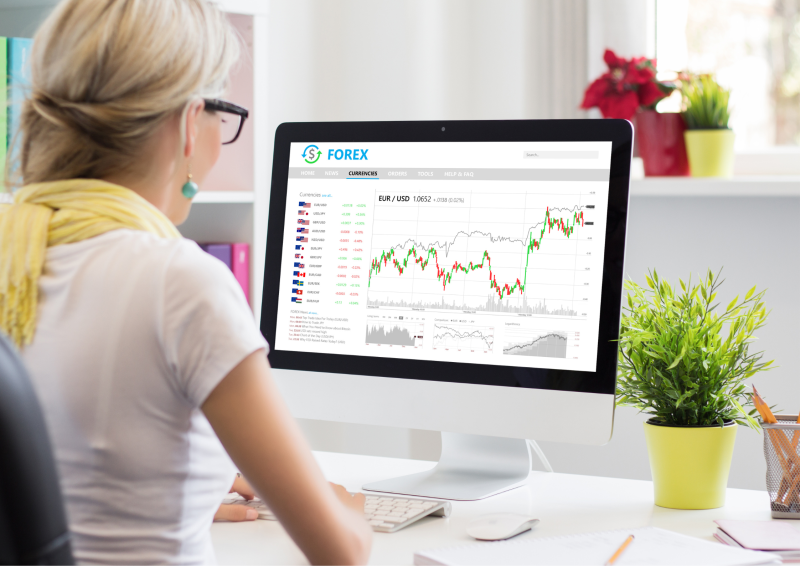Forex trading is a complex field that demands a deep understanding of market dynamics. Among the various techniques utilized by traders, price action trading stands out due to its simplicity and effectiveness. This article explores the role of price action in forex trading, providing insights into how price action trading strategies can be leveraged by both novice and experienced traders.
What is Price Action in Forex?

Price action represents the movements of security prices over time, serving as a cornerstone of technical analysis in the forex market. Unlike other analytical methods that rely heavily on technical indicators, price action focuses solely on historical and current price data. This method enables traders to use price charts and price movements to predict future trends and movements without additional statistical or mathematical models.
By diligently analyzing price charts, forex traders employing price action strategies can identify patterns and trends that suggest future price behaviors. This approach is grounded in the belief that all necessary information for making trading decisions is contained within the price series itself, making it a favored strategy among traders looking to minimize reliance on external indicators and focus on the market's inherent dynamics.
Also Read: Price Action – Double Pin Bar
The Basis of Price Action Trading
Price action trading strategy involves the meticulous examination of historical price data to develop effective trading strategies. This approach centers around the direct observation of price movements, which provides insights without the interference of traditional technical indicators. By focusing on the raw data presented in price charts, price action traders can devise strategies that align closely with the inherent market trends and dynamics.
This method empowers traders to make informed decisions based directly on the market's price behavior observed through price charts. Price action trading allows for a purer form of market analysis, as it relies on interpreting actual movements and patterns to predict future activities. This can lead to more grounded and potentially more reliable trading decisions, as it reduces the dependency on predictive tools and focuses on real-time market data.
Key Concepts of Price Action

- Support and Resistance Levels: These are fundamental concepts in price action trading. Support is the price level where a downtrend can be expected to pause due to a concentration of demand. Resistance is the opposite, representing a price level where a rising trend can halt due to a build-up of selling interest.
- Candlestick Patterns and Chart Patterns: These patterns help traders understand market sentiments and make better predictions. Common price action patterns include the pin bar pattern and inside bar pattern, which indicate potential market reversals.
- Price Action Setups: These occur when a specific sequence of price movements indicates the potential for a trading opportunity. These setups are based on interpretations of price patterns, trends, and the market context.
Implementing Price Action Strategies
To trade price action effectively, traders must have a robust understanding of various trading patterns and market conditions. Mastery in recognizing and interpreting these patterns is crucial as it forms the foundation of a price action trading strategy. Traders analyze historical and current price data to identify trends, reversals, and continuations, which guide their trading decisions without relying on external indicators.
A successful price action trading strategy hinges on a trader’s ability to accurately observe and interpret the market's price movements. By doing so, traders can make well-informed decisions that are based on a clear understanding of how past price behaviors predict future activities. This strategy emphasizes the importance of context and timing in trading, allowing traders to respond dynamically to real-time market changes.
Examples of Price Action Trading Strategies

- Pin Bar Trading Strategy: This involves trading price reversals using pin bar formations. These are candlestick patterns that typically indicate a strong rejection of prices with a clear direction opposite to the current trend.
- Breakout Strategy: This strategy capitalizes on the price breaking through a resistance or support level, which is typically followed by a significant move in the same direction as the breakout.
- Forex Scalping Strategy: Involves making numerous trades on minor price changes. Traders who implement this strategy are referred to as scalpers. They aim to gain profits from small price changes, focusing on the high and low range of trading periods.
Tools for Price Action Trading
To trade using price action, traders utilize various tools:
- Forex Trading Platforms: These platforms provide traders with access to forex markets, where they can analyze price charts, execute trades, and use features designed to assist in decision-making.
- Candlestick Charts: Offer a visual representation of price action, helping traders to see the opening, high, low, and closing prices over specific periods.
- Economic Data: Understanding the impact of economic announcements can help traders predict potential price movements.
Challenges in Price Action Trading

While price action trading offers numerous advantages, it also comes with challenges:
- Market Volatility: Price action traders must be adept at managing risks, as forex markets can be highly volatile.
- Subjectivity: Interpreting price charts is somewhat subjective; two traders might draw different conclusions from the same data.
Conclusion
Price action trading offers a robust approach to trading in the forex market. It empowers traders by focusing on direct price movements, which are indicative of the market's underlying dynamics. Whether you are a seasoned trader or new to forex, understanding and implementing price action strategies can significantly enhance your trading capabilities. As with any trading strategy, success in price action trading requires practice, patience, and continual learning.
Also Read: Price Action Trading Ultimate Guide
FAQs
What is price action trading in forex?
Price action trading in forex is a method where traders rely on historical and current price movements to make trading decisions. This strategy involves analyzing price charts without the use of traditional technical indicators, focusing purely on the patterns and trends that the price itself displays.
How do traders identify trading opportunities with price action?
Traders identify opportunities by spotting price patterns such as trend reversals, breakouts, and continuations on the charts. These patterns, once recognized, guide traders in making decisions about entry and exit points based on the likely future movements inferred from the price behavior.
What are the benefits of using a price action trading strategy?
The main benefit of using a price action trading strategy is its direct approach, which reduces reliance on potentially lagging technical indicators. This strategy allows traders to interpret market sentiments more naturally and react more swiftly to changes, potentially leading to more accurate and timely trading decisions.






















